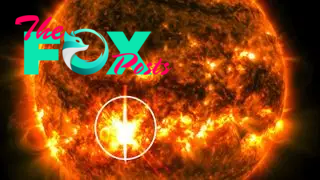Science
X9 solar flare launched from sun is the biggest in 7 years — and Earth is in the firing line (again)
The sun has unleashed its most powerful solar flare in 7 years, following another supercharged explosion earlier in the week. Both outbursts have launched coronal mass ejections (CMEs) at Earth, which could trigger vibrant aurora displays across large parts of our planet this weekend.
The latest X-class solar flare — the most powerful type the sun can produce — exploded from sunspot AR3842 at around 8 a.m. EDT on Thursday (Oct. 3). The flare had a magnitude of at least X9, making it the most powerful solar eruption of the current solar cycle — surpassing a monster X8.7 magnitude blast in May.
It is the most powerful solar flare since September 2017, when the sun emitted an X11.8 and X13.3 flare within a few days of each other.
The latest flare launched a wave of radiation at Earth, bypassing Earth's magnetic shield, or magnetosphere, and ionized the upper parts of the upper atmosphere, creating a temporary radio blackout above parts of Africa and the South Atlantic Ocean. It also hurled a CME — a cloud of fast-moving plasma and solar particles — into space, which will likely collide with Earth on Sunday (Oct. 6), according to Spaceweather.com.
On Monday (Oct. 1), the same sunspot unleashed a massive X7.1 flare, which is now the third most powerful of the current cycle. This caused a similar radio blackout above the Pacific Ocean and launched another CME at Earth. The plasma cloud was predicted to hit Earth on Saturday (Oct.5) but could now strike our planet tonight (Oct. 4).
Related: Could a powerful solar storm wipe out the internet?

When the CMEs hit our planet over the weekend, they will likely trigger a disturbance in the magnetosphere, known as a geomagnetic storm, which enables solar particles to penetrate deep into the atmosphere and trigger vibrant aurora displays at unusually low latitudes. The National Space Weather Prediction Center predicts that a geomagnetic storm could persist between Oct. 4 and Oct. 6 and will likely reach a "strong" (G3) power level, making auroras likely.
-

 Science6h ago
Science6h agoHere’s What Trump’s Win Means for NASA
-

 Science3d ago
Science3d agoWhy Risky Wildfire Zones Have Been Increasing Around the World
-

 Science3d ago
Science3d agoIt’s Time to Redefine What a Megafire Is in the Climate Change Era
-

 Science4d ago
Science4d ago4 Astronauts Return to Earth After Being Delayed by Boeing’s Capsule Trouble and Hurricane Milton
-

 Science5d ago
Science5d agoThe Elegance and Awkwardness of NASA’s New Moon Suit, Designed by Axiom and Prada
-

 Science1w ago
Science1w agoSpaceX Launches Its Mega Starship Rocket. This Time, Mechanical Arms Catch It at Landing
-

 Science3w ago
Science3w agoYou Won’t Want to Miss October’s Rare Comet Sighting. Here’s How and When You Can See It
-

 Science1m ago
Science1m agoA New Spacecraft Could Help Determine if There’s Life on a Moon of Jupiter



























